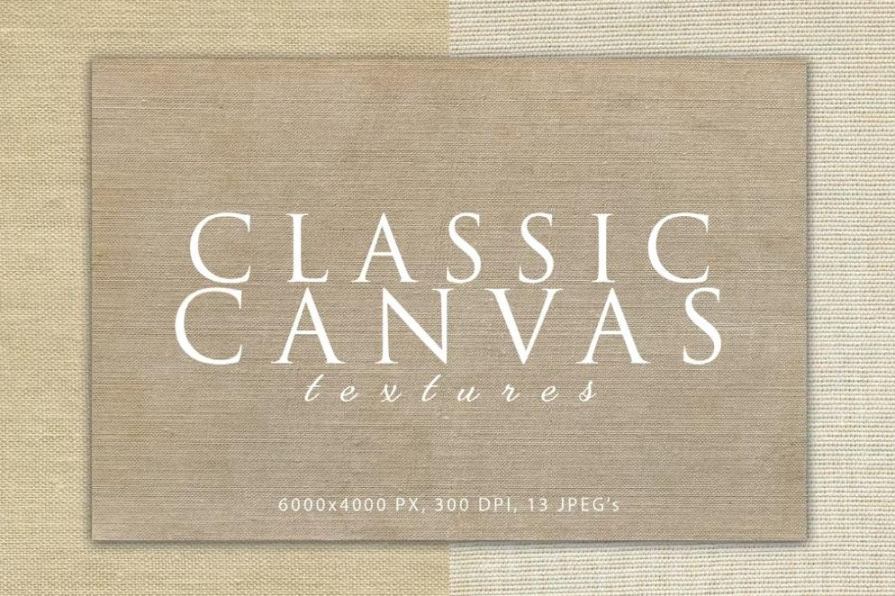Looking for the best canvas textures for your print design projects? A canvas is a basic, incredibly strong fabric that is stretched across a wooden frame and used by painters as a painting surface. Although previously hemp was used, the canvas texture is typically constructed of cotton or linen. In just a few simple steps, you can create a realistic Photoshop painting appearance using these free canvas textures.
The texture pack includes a variety of canvas textures, including white canvas, painting canvas, used canvas, canvas fabric, etc. 10 free canvas textures in JPG format are yours to keep. Some of the textures can be used to make a canvas background of any size because they are seamless.
You may also like:
Handmade Vector Textures Set

10 Carefully Handcrafted Canvas Textures

Professional High-Quality Canvas Background

Abstract Canvas Textures Pack

Handmade Vector Canvas Backgrounds

How can texture be produced in art?
Texture, like three-dimensional forms, can be expressed explicitly or implicitly. Through countless tactile options, such as cutting, building, tearing, or layering of materials, real, palpable texture can be produced. Form, line, shape, and color are other art components that can be used to create implied texture.
Why does texture matter in art?
Texture techniques offer an artwork greater dimension, making it appear more authentic. The illusion of reality improves as an artist adds more detail to the texture of the piece. In order to give their work a realistic appearance and to convey a certain mood, painters use this technique.
Abstract Canvas Textures Background

Classic Canvas Background Set

Wrinkled Canvas Textures Pack

Dark Grunge Canvas Background

Why is a texture so crucial?
The eating quality of meals is largely influenced by their texture, which can also have a significant impact on calorie intake and nutrition. The structure and content of the food are strongly related to how it is perceived to be textured, and both microscopic and macroscopic levels of structure can affect the texture.
How is plaster applied to a canvas?
After the plaster has cured, I advise using acrylic varnish to seal the plaster on the canvas (my favorite brand is Liquitex Gloss Varnish). Because the plaster is highly porous (also known as “thirsty”), plan on using a substantial amount of varnish to “seal” the plaster layer.
Paper and Canvas Backgrounds

Black and White Canvas Background

High-Quality Canvas Paper Set

What impact does texture have on design?
The “Visual Weight” of texture
Similar to how warm and cold colors influence a space’s overall mood, different textures can have a significant impact as well. Smoother surfaces typically provide a modern, sleek, and contemporary tone to a space, but rougher textures tend to make a space feel intimate, rustic, and grounded.
Why is it vital to select materials for furnishings with pleasing textures and colors?
It cannot be emphasized how important it is to use texture and layering in interior design. The absence of these components will make a space appear flat and dull. A place can come to life and become tactile, with many points of interest, by adding textured materials.
What do you use to texture canvas?
Any surface that can typically receive acrylics, such as canvas, paper, wood, etc., can be treated with acrylic texture media. Gesso should be used as a surface primer before applying acrylic texture media.
Simple canvas background

High-Resolution Distressed Background

Seamless canvas Textures Background

8 Unique Grunge Textures Set

Paint on Canvas Background

Artistic Canvas Background Design

Free Blue Canvas Background

Conclusion
Produced with printing that completely covers the canvas for a modern and fashionable appearance that is worthy of a museum. Our framed prints are created by skilled artisans who make every effort to turn each canvas into the beauty your house deserves. To ensure that they are of the highest caliber and have a polished appearance, each of our framed canvas art prints is hand-made and produced to order. We print every piece of art on archival paper to guarantee the most precise representation of the artists’ original intent.
